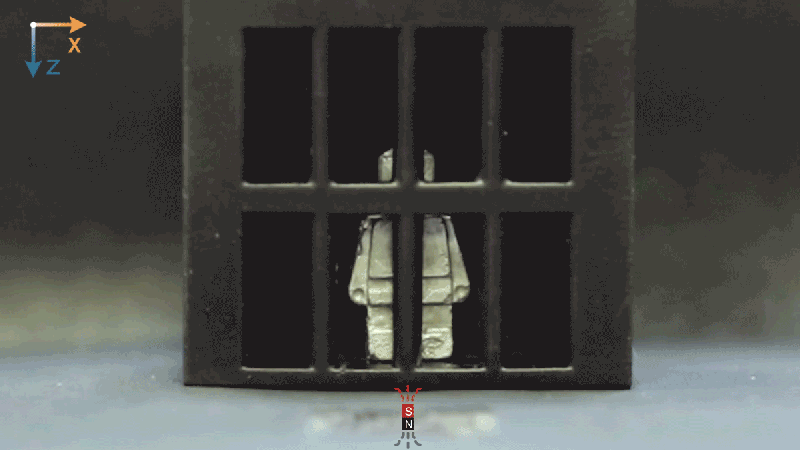Real-life 'Terminator 2' robot can melt to escape jail, then solidify on command
The robot uses magnetic induction to heat itself up and transform into a liquid

Scientists have created a tiny "Terminator 2"-like robot that can melt and resolidify itself on command, enabling it to easily escape from confined spaces.
To make the phase-shifting robot, scientists embedded microscopic chunks of magnetic neodymium, boron and iron into liquid gallium (a metal with a low melting point) and left it to solidify.
And just like the spine-chilling T-1000 from "Terminator 2," the robot has shape-shifting abilities that make it an excellent escape artist. By using magnets to command their miniature creation to melt, the researchers recorded the robot transforming into an amorphous puddle to slither through the bars of a cage before miraculously reconstituting itself on the other side. The researchers published their findings Jan 25 in the journal Matter.
Related: Human-like robot creates creepy self-portraits
To perform this melting trick, the researchers heated the bot through a process known as magnetic induction — using a moving magnet to set up an electrical current inside the robot. The current melted the gallium, and the magnetic elements suspended inside caused it to be drawn toward the magnet.
"The magnetic particles here have two roles," senior author Carmel Majidi, a mechanical engineer at Carnegie Mellon University, said in a statement. "One is that they make the material responsive to an alternating magnetic field, so you can, through induction, heat up the material and cause the phase change. But the magnetic particles also give the robots mobility and the ability to move in response to the magnetic field."
The researchers said the inspiration for the device came from sea cucumbers, which have been observed switching between soft and stiff states to protect themselves from their environment and increase the weight they can carry.
Sign up for the Live Science daily newsletter now
Get the world’s most fascinating discoveries delivered straight to your inbox.
The researchers see several potential medical and technological applications for their robot. So far, it has passed multiple tests: fixing circuits by entering tough-to-reach spots and then transforming itself into solder; melting into a screw socket and then solidifying to become a mechanical screw; and removing a foreign object from a model stomach.
"Giving robots the ability to switch between liquid and solid states endows them with more functionality," lead author Chengfeng Pan, an engineer at The Chinese University of Hong Kong, said in the statement. "Now, we're pushing this material system in more practical ways to solve some very specific medical and engineering problems."

Ben Turner is a U.K. based staff writer at Live Science. He covers physics and astronomy, among other topics like tech and climate change. He graduated from University College London with a degree in particle physics before training as a journalist. When he's not writing, Ben enjoys reading literature, playing the guitar and embarrassing himself with chess.










